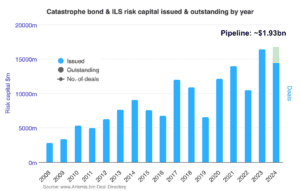4 Bond Moves to Consider Making Now

What You Need to Know
While it took a lot of pain to reach this point, retirement investors can now lock in safer and higher yielding fixed income.
Despite an inverting yield curve, the case for extending bond portfolio duration in early 2023 should be considered.
A recessionary environment in 2023 could deliver capital appreciation via longer-duration bond holdings.
The current mood of the market is defined by uncertainty and volatility, and according to Adam Hetts, global head of portfolio construction and strategy at Janus Henderson Investors, and that fact is unlikely to change before year-end.
While daunting, such volatility and uncertainty does not mean investors should just sit on their hands and maintain the same investment strategies in 2023 as they utilized this year.
There are adjustments to make on the equity front, Hetts notes, but some of the biggest year-end opportunities actually involve retirement investors’ bond holdings.
1. Look for Safer, Higher Yields
The ongoing rise in interest rates has meaningfully hurt bond fund prices, but one flipside benefit is that investors can now realize much more attractive yields from core fixed income. With both five- and 10-year Treasury rates near 4% (and set to go even higher), this represents an opportunity to lock in significant yields for longer.
“It is just a fact that life is so much easier for retirees and other defensive investors with a 10-year Treasury paying out 4% or 5%,” Hetts says. “Unfortunately, the issue I see right now is that it has been so traumatizing to get to this point that I worry people may overlook this current opportunity by staying in very short duration holdings.”
The inversion of the yield curve is distracting people from this attractive long-term income opportunity, Hetts says. The important thing for investors to keep in mind, however, is that even if a curve inversion accurately predicts a recession, this is not necessarily an indication that negative market returns will follow.
Simply put, today’s yield curve is “polluted” with unprecedented central bank activity, historically high inflation worries and a backdrop of post-pandemic demand recovery. All of these factors could diminish the curve’s predictive power, according to the Janus Henderson team.
2. Check Out Higher Yields Available Outside the Core
As core rates have raced up this year, so have the rates paid by non-investment grade bonds.
“We can now secure nearly double-digit yields outside the core bond holdings,” Hetts points out. “Those are the kind of yields that people have been dreaming about for years and which haven’t existed for a long time. It is an important opportunity in 2023 to reconsider the non-core bond holdings.”





